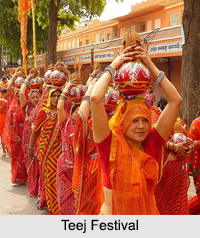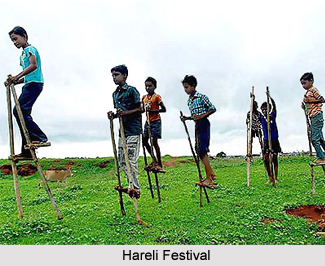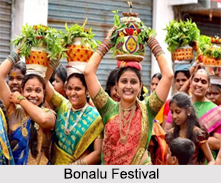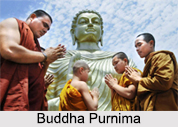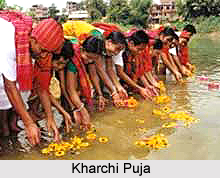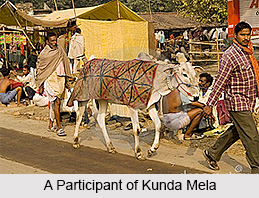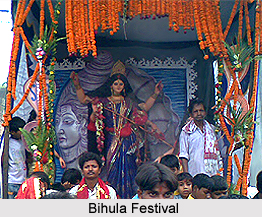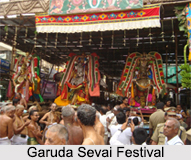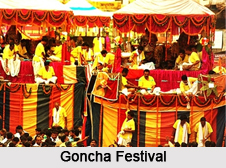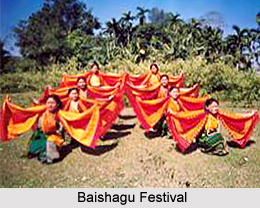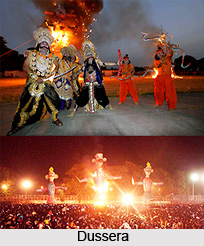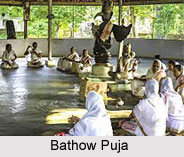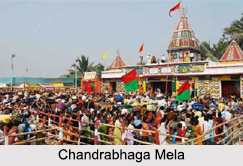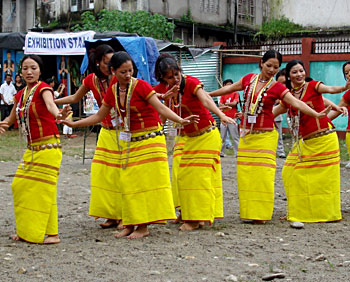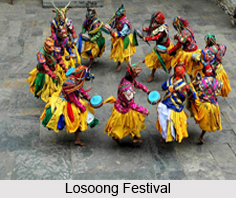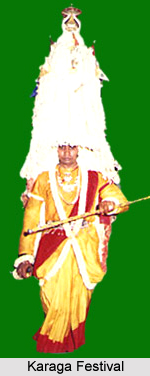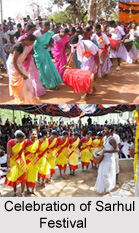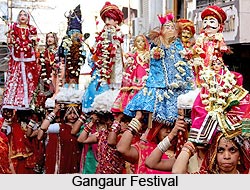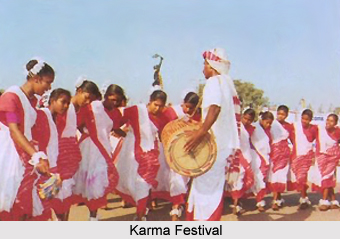The month of Chittrai (April - May) embarks the time of festivities in Tamil Nadu. Tamil`s New Year Day "Varushapirappu" is celebrated on April 13 or 14 every year (according to the Gregorian Calendar). People greet each other "Puthandu Vazthukal" which means Happy New Year. This auspicious day is also popular as Varusha Pirappuv. As per the Hindu mythical legends, Lord Brahma started creation of the universe.
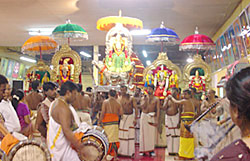 New Year`s Day is a gala time for all Tamils. The main focus is on the food eaten on the day. `Maanga Pachadi` is the pulse of the festival. It is a dish made of raw mangoes, jaggery, neem flowers which tastes sweet, salt, sour and bitter. This entails different colors of life. It depicts that life has to face everything from success to defeat. At the time of New Year festivities, a grand Car Festival also takes place at Tiruvadamarudur near Kumbakonam. At some places, Chitthirai festival is also celebrated. It is said on this day, Goddess Meenakshi got married to Lord Sundareswarar.
New Year`s Day is a gala time for all Tamils. The main focus is on the food eaten on the day. `Maanga Pachadi` is the pulse of the festival. It is a dish made of raw mangoes, jaggery, neem flowers which tastes sweet, salt, sour and bitter. This entails different colors of life. It depicts that life has to face everything from success to defeat. At the time of New Year festivities, a grand Car Festival also takes place at Tiruvadamarudur near Kumbakonam. At some places, Chitthirai festival is also celebrated. It is said on this day, Goddess Meenakshi got married to Lord Sundareswarar.
A unique way of welcoming the New Year, the excitement begins about two weeks before the event. Families go shopping for new clothes. The house is thoroughly cleaned and even repainted at times. Mothers and grandmothers make loads of sweet and savoury snacks in preparation for the big celebrations when relatives and friends will visit each home, passing on their wishes for a prosperous and healthy new year. The schools remain closed and kids look forward to this time off. Children also remember the celebration of the new year as the time when the elders present them with money as a token of prosperity. The blessing of prosperity from elders is known as Kaivialum.
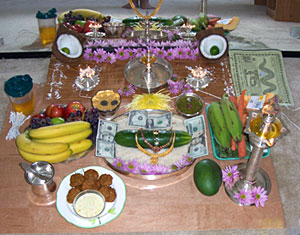 On the day of the New Year, early in the morning, the entrances of the houses are decorated with Kolam (Rangoli). In Tamil Nadu, people follow some stringent rituals in a belief to ensure well-being and prosperity of their families. The most popular tradition is to view Kanni at dawn with a hope to bring good luck. People start the day by watching some auspicious items like gold and silver Jewellery, betel leaves, nuts, fruits and vegetables, flowers, raw rice and coconuts. Following the rituals, Tamils take bath, wear fresh clothes and visit the temples to pray for success in life. After this, Panchangam (almanac) is read.
On the day of the New Year, early in the morning, the entrances of the houses are decorated with Kolam (Rangoli). In Tamil Nadu, people follow some stringent rituals in a belief to ensure well-being and prosperity of their families. The most popular tradition is to view Kanni at dawn with a hope to bring good luck. People start the day by watching some auspicious items like gold and silver Jewellery, betel leaves, nuts, fruits and vegetables, flowers, raw rice and coconuts. Following the rituals, Tamils take bath, wear fresh clothes and visit the temples to pray for success in life. After this, Panchangam (almanac) is read.
The entire family prays together, after which the children are supposed to take blessing of their parents. Since this festival marks the beginning of a new year, people prepare special cuisine with particular emphasis on pulses and cereals. Each family begins their celebrations with the lighting of the Kuthu villakku (traditional lamp) which is placed next to the niraikudam (a brass bowl-like container with a short neck, filled to the brim with water and decorated with leaves of the mango tree, which are arranged in a circle around a husked coconut placed on top of the neck of the brass container). People in the advent of merrymaking and feasting exchange gifts with each other.
